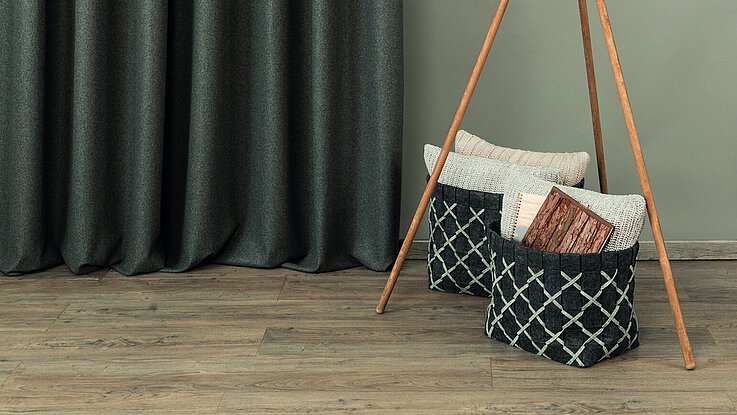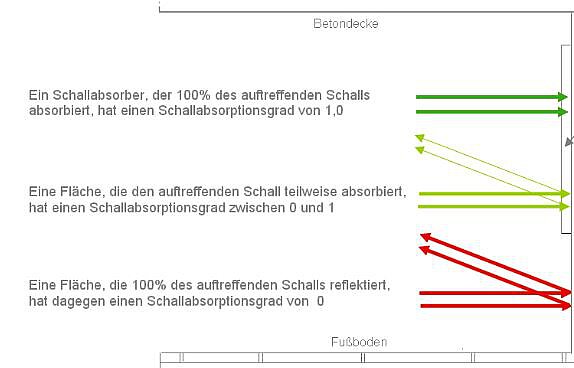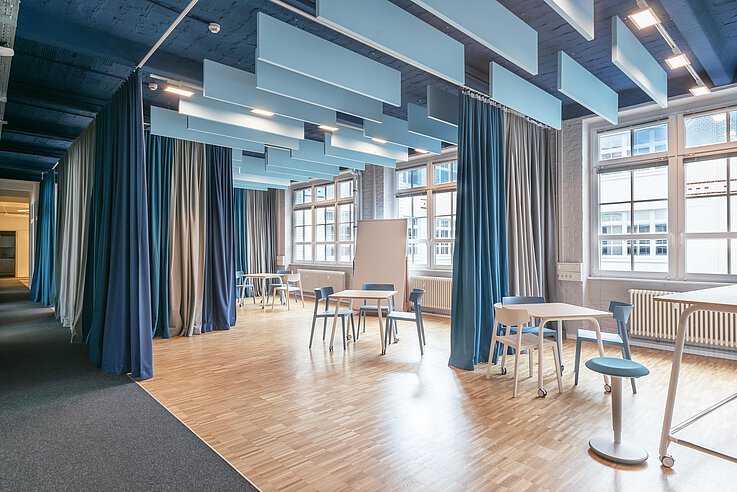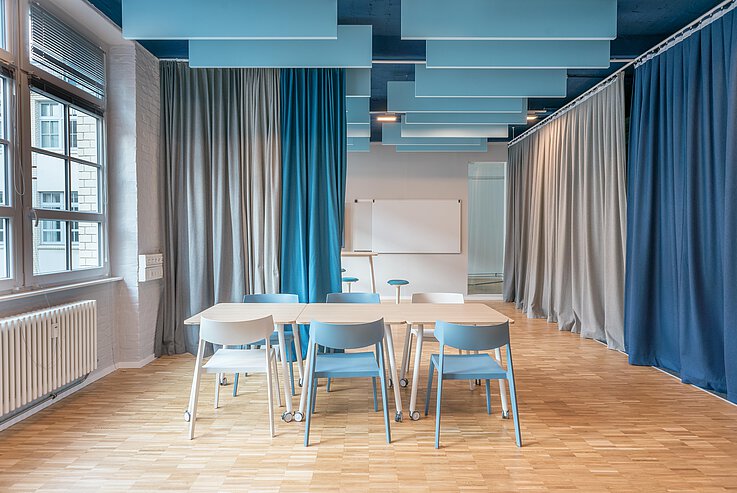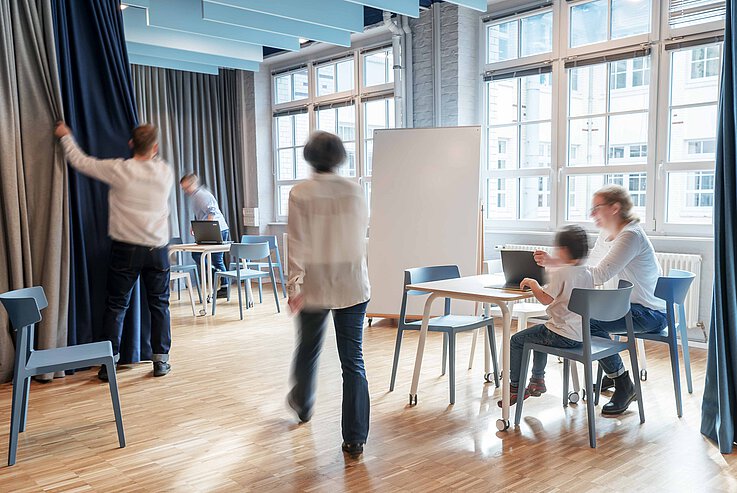Our sound-absorbing textiles allow a wide range of applications, while improving the overall room acoustic significantly. They help to absorb sound, reduce noise pollution, thus improving the overall soundscape. Predestined textiles that have a very good sound absorbing classes, are our curtains, sheers, as well as some upholstery fabrics. Room separators, wall coverings, sealing suspension are only a few applications where our acoustic fabrics can be used.
Basically, room acoustics are in relation to the sound in the room. For this purpose, the sound absorption coefficient is measured, which indicates the ratio of the absorbing to the reflecting sound energy. An absorption coefficient of 1 means 100% sound absorption, a value of 0 means 0% absorption (=100% reflection). The sound absorption coefficient depends on the frequency. Sounds complicated in theory, but is in reality quite simple - how much "noise" is filtered through our fabrics and reduced.
Acoustic materials are classified according to absorber classes A, B, C, D or E, each based on an evaluated sound absorption coefficient.
A very highly absorbent, sound absorption coefficient aw: 0.90 ... 1.0 - such as our Lana grades
B very highly absorbent, sound absorption coefficient aw: 0.80 ... 0.85 - such as our textured dimouts
C highly absorbent, sound absorption coefficient aw: 0.60 ... 0.75 - such as our velour qualities
D absorbent, sound absorption coefficient aw: 0.30 ... 0.55 - such as our acoustic sheers
E low absorbing, sound absorption coefficient aw: 0.15 ... 0,25

